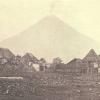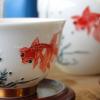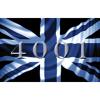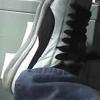Search the Community
Showing results for tags 'field notes'.
-
Field Notes Byline Limited Edition Reporter's Notebook
dkirchge posted a topic in Paper & Pen Paraphernalia Reviews and Articles
Because I'm somewhat obsessed with finding the ever-elusive perfect notebook, I recently purchased a two-pack of the "Byline" limited edition Field Notes reporter's notebook (see here for more information). I've had a couple of days to play with them so I thought I'd write up my first impressions. My highly informal testing consisted of taking notes during meetings at work and working out an outline and some initial thoughts for a paper I'm writing. I used a JetPens Chibi 2 fine point fountain pen loaded with J. Herbin Violette Pensee violet ink and a Rotring Skynn ballpoint loaded with a purple Monteverde soft roll refill in medium point. First, let's get the specifications out of the way, courtesy the link above: Proudly printed by the good people of eDoc Communications, Mount Prospect, Ill.Cover: Neenah Environment 120#DTC “Wrought Iron” with a brute force application of “Federal Blue” soy-based Saphira ink.Innards: Cougar Natural 70#T vellum ruled with “Double Knee Duck Canvas” soy-based Saphira ink.Cover and innards printed on a Heidelberg Speedmaster XL 105 40” 6-color printing press.Bound with bombproof Renz “Double-O” Ring Wire, with appreciation to U.S. Patent #2142816, filed in 1935 by W. Walter Grumbacher.Bottom corners rounded to 3/8" (9.5mm) by a Challenge SCM round-corner machine.College Ruled Lines: .28" (7.1 mm).Notebook dimensions: 3–3/4"× 8" (95mm x 203mm).Field Notes uses only the Futura typeface family (Paul Renner, 1927).All Field Notes memo books are printed and manufactured in the U.S.A.UPC 5849300340What I liked:The paper, oh that paper. Smooth with enough tooth to keep the nib well under control without catching or snagging.No show-through, bleeding, or feathering to be found. You could easily write on both sides of the page, which is a great thing for me because I like to write only on one side of a reporter's notebook, then flip it over when I get to the end and continue, using the other sides. I'm not sure how a broad or really wet nib would work here because I don't have one to test with. I suspect a rollerball will also work well, but I haven't tried that yet.The solid ring binding and the cover which protects the rings and keeps them from catching on anything The slightly narrower width makes the notebook easy to hold in one hand and a little more pocketable than the standard 4" x 8" reporter's notebook.The receipt pocket in the back of the notebook is great and I can see that coming in handy.The always-entertaining facts, trivia, and extras that Field Notes included on the covers and inside the receipt pocket. What I didn't like:College ruling feels wrong for this style of notebook. Taking notes for me during a meeting or speech makes my cursive a little faster and looser than my normal handwriting and the ruling just feels too tight for that purpose. It's fine for jotting notes down from written sources or other situations where speed is not an issue. I wish they'd kept the Gregg ruling from their standard steno book. Oddly, I would be fine with the college ruling in a 3" x 5" notebook, which probably boils down to a difference in how I use different notebook sizes.While the width is great for holding in one hand, you quickly run out of room if you have large handwriting or if you use much indenting for topics and supporting points.No stiff cardboard backer means the notebook is not well-suited for writing when standing up or seated when a table is not available, such as a lecture hall or press event. This is a major failure for this type of notebook, in my opinion.The price. At US $12.95 for a two-pack, that's pretty steep for notebooks that are used with such a high turnover rate.The Byline is not what I'm used to in a traditional reporter's notebook and that's a good thing for the most part. Field Notes definitely made some significant upgrades to the basic concept, particularly with regards to the quality of the paper and the ring binding; both are fantastic. While I wish it was the 4" width I'm used to, I will probably adapt to the width with little difficulty. I would definitely prefer Gregg ruling but again, I can live with and adapt to the ruling they chose. However, I absolutely despise the lack of a stiff backing -- that's a fault or omission I can't overlook. I would rather have seen the thick covers from the steno book used here than the cover with the receipt pocket they went with. In the end, I think Field Notes made a great notebook with the Byline but it's not a great notebook for me. I won't be in a hurry to replace these once the two I purchased are used up. I'm looking forward to hearing what thoughts other people have about the Byline.- 4 replies
-
- field notes
- byline
-
(and 1 more)
Tagged with:
-

Pepperpaper: Made My Own Pocket Notes (Wider Than Field Notes)
Isay posted a topic in Paper and Pen Paraphernalia
I'm a heavy notetaker, so I can burn through 6 Field Notes a month. I decided to save cash by making my own. With the help of my craft knife, printer, stapler, and Futura font in my computer, here's my personalized set of pocket notes. I use locally available Elias paper, which is very FP friendly and even shows off sheen. http://i8.photobucket.com/albums/a2/isay77/Misc/443ace2194b9a1b9be8cdef027331860.jpg http://i8.photobucket.com/albums/a2/isay77/Misc/273118eddb072c50e43485a5198b4355.jpg -

Forestchoice Review...pro And Con
PaperQueen posted a topic in Paper & Pen Paraphernalia Reviews and Articles
During my ongoing search for the ideal insert to fill the "fauxdori" travelers notebook I'm making, ForestChoice landed on the radar. Here are the final conclusions, for anyone considering new notebooks. ForestChoice Small Flex Notebook 3 1/2" x 5 1/2" 80 pages (lines, grid, or plain) 70gsm, soft cream color paper Acid free, FSC certified (FSC = Forest Stewardship Council) Pro column: Smooth, luxurious paper surface; a joy to write onBrings out shadingInk colors remain trueNo noticeable featheringStitched binding, taped outer spine (durable)Nice, stiff kraft cardstock coverSame price as Field Notes (which I despise for fountain pen use)Con column: Slow to dry, but I'm planning to keep a J. Herbin blotting paper insert in the travelers journal as a bookmark anywayShow through is the significant (drats)Doesn't want to lie flat--need to hold open with one hand while writing with the other (true for nearly all, except the slightly taller Leuchtturm)Not sold in many places (I found them on pencils.com, on sale)Overall, I really like this notebook; just wish show through wasn't such a problem. Photos to help visualize my experience.... Here's the show through: Overall, I really like the writing experience, but doubt I'll use this on trips---just can't afford to tote around anything that allows only 50% of the writing surface to be used. Oh well!- 1 reply
-
- forestchoice
- field notes
-
(and 1 more)
Tagged with:
-
For some time now, I've been using leather notebook covers made by a UK-based craftsman, Fenner Benedict. Made from a variety of traditional materials, they are well-finished and of the highest quality. And of course, available easily in the UK. However, I decided that having already got the Explorer 2 which I use with Moleskine Cahiers and Field Notes, I thought I'd try the latest Explorer 3 in Midori Passport size. Good call! As can be seen from the photograph below, the two covers are virtually the same, apart from the size of course, and I chose the black leather for the Midori-sized one. The Explorer range come with a cleverly laid-out set-up where a single piece of bungee cord is threaded through the cover to give four bands straight away, so that number of books or inserts can be used immediately. But, Midori refills are a little on the expensive side for me, to use all the time so I decided to use the excellent (in my opinion) Clairefontaine 1951 pocket notebooks (9cm x 14cm) and trim down to the Midori size. Basically, I just trimmed about 7mm or the top and bottom of the notebook and it fits just fine. Because the Clairefontaine books have more pages than the Midori ones per se, I made the cut-down version a fraction shorter so that it wouldn't be difficult to fit into the cover. I also make my own notebooks for both, especially if I want a 'disposable' one with perforated pages - shopping lists etc. Using thin card for the cover and either QC or Ryman's Bank papers for the pages. Very simple to produce. I realise that there are loads of similar options out there, from many different countries but at least I thought you should be aware that the Clairefontaine notebooks, and of course any similar stapled ones, can easily be trimmed to fit the Midori-sized covers. I wouldn't recommend trimming ones like the Moleskine Cahiers though, because they are stitched! Goodness-knows what would happen then...!
-
... that suit these requirements? 140 x 90 mm ( 5.5 x 3.5 inches)coloured paper ( anything but white)usable in a "Raydori"
-
Today we have discounted most of out Field Notes at 10% for the holidays. Also take an additional 10% your entire order with the coupon code HOLIDAYS You must order from out sale page to get the discounted price: http://www.penchalet.com/sales/days-of-holiday-deals.html Currently discounted are the following: http://www.penchalet.com/images/emails/12Days/2014/fieldnotes_ambition.jpg Ambition http://www.penchalet.com/images/emails/12Days/2014/fieldnotes_unexposed.jpg Unexposed http://www.penchalet.com/images/emails/12Days/2014/fieldnotes_aands.jpg Arts & Science http://www.penchalet.com/images/emails/12Days/2014/fieldnotes_pitchblack.jpg Pitch Black
-
- field notes
- deals
- (and 7 more)
-
I've been doing some field training at work this week that's required me to take brief notes on paper while standing up in a small group of people. On the first morning I paused for a few moments to consider what would be the best pen to use. Some of my favorite pens have difficulty writing at strange angles, and I've found springy nibs to be troublesome on a hand-held notebook. My instinct was to fall back on a trusty Bic Grip rollerball, utterly bullet-proof, but I felt like something a bit different. On impulse I picked the Sheaffer Balance rollerball that was clipped inside my bag, unused for months. It worked flawlessly, but completely uninspiringly, the sharply tapered ends were very good for pointing at things though. The next day I craved something a bit different, but I still needed a reliable pen that would work at all angles and not draw attention to itself. The Parker 45. Of course. It was clipped in my bag right next to the Sheaffer, fitted with a Mocha cartridge (supplied by FPN stalwart Mghuda in a very generous PIF ). It's robust, discreet, reliable and comfortable. The plain-Jane medium nib is ideal for rapid note-taking, the pointy end is ideal for......pointing, even the brown ink has good contrast and flow characteristics. It's a bit lifeless for desk-top use, but in the field it's in its element. Horses for courses eh?
-

Yellowpaperhouse "hobonichi Style" Notebook
yogalarva posted a topic in Paper & Pen Paraphernalia Reviews and Articles
I mentioned in my Hobonichi unboxing post that I had found a way to carry around my 2015 Hobonichi with me and still “use” it even though it hasn’t started yet. This is that way. YellowPaperHouse (which I shall henceforth abbreviate as YPH) is a mother/daughter team that creates inserts for Midori-style notebooks and Filofaxes and sell them through Etsy. Everything is designed and made by them, so you are getting a totally original product. I found out about them I think from Instagram. Anyway, no affiliation, just to get that out of the way early on. As of right now they offer 26 different styles of these notebooks, each one being available in 4 sizes (full size Midori, passport, cahier, and Field Notes/pocket) and many being customizable with a choice of 19 paper colors and 6 inside rulings. Whew! That is a lot of options for customization! As the title of this review implies, the style that I purchased was one modeled after the Hobonichi format with white paper inside. I chose the Field Notes size because it easily fits inside of my original Hobonichi cover. I’m sorry that all my photos are very blue - I think it’s because the paper is white and I was using early morning light. I would try to adjust it, but it winds up looking funky no matter what I do… Most of the page is dominated by a grid that, upon measuring just now, contains 3 mm squares. At the top of each page is a place where you can fill in the date by coloring in the bubbles that match the day, month, and day of the week, as well as indicating moon phase if you are into that and the weather. As you can see, I have been marking the date by coloring in the appropriate bubbles with a colored pencil. I’m not one of those people who gets all artsy with their journaling - I primarily use a planner for actually planning my day and then capturing little things that happen throughout the day. I’m not saying that “scrapbook journaling” is bad, but it’s certainly not for me. This is how my pages usually look: I’m also going to try out dividing the page vertically similar to the Hobonichi so that I have a place that’s divided up by the hour to write appointments and then a place to write little thoughts and musings. I’ll perhaps update on that later. In case you were wondering how I’m fitting this into my Hobonichi cover, I just slip the back cover of the notebook into the long back pocket of the cover (the one that has the little “Hobonichi 2015” tag on it). I also have the Hobonichi itself only inserted into the from cover right now, so I don’t stretch out that backside of it. Perhaps a picture will explain it better: Sometimes it can be tough to write on the side that opens onto the Hobonichi with this configuration, but in that case I just slide the notebook out and write and then slide it back in. It adds barely any bulk to the cover, so I’m really enjoying the setup this way. Well, we are now at that stage where I have given some background, so now I can talk about what I like and dislike. Things I like Having this available in an undated format is wonderful. I’ve gone through and filled in all the dates, but it could be particularly useful for someone who wants to log things that don’t happen on a daily basis.It’s a little thing, but I like that the header on top is mirrored across two pages. I also like the weather option and I keep thinking I should use the blank space next to that to jot down the high and low tempsThe corners are rounded. Another small thing, but so importantThe paper strikes the perfect balance between being fountain pen friendly (at least for F and not-too-wet M nibs) while still having fast dry times. I don’t think I’ve noticed any bleeding with either my pens or my highlightersThere are so many options, so you can pretty much get exactly what you want and we all know how hard that is nowadaysOther than the band that comes around it, there is no branding. I think this makes for a very clean looking notebookIt’s an original product, and I really like that. I dated a graphic design major in undergrad and I know how much work they put into their designs so I try to honor that as much as I can Things I dislike The cover is a bit flimsy. This isn’t really a big issue for me since I’m using it inside another cover and I know it’s designed to be that way, but it would definitely get worn fast if used just by itselfI wish the grid ruling for this particular design was a bit bigger. I think if it was 4 mm then I could do one line per box (I think the Hobonichi is 3.7 mm but Tomoe River paper makes writing look finer too), whereas now I kind of have to take up two boxes in height per line of writing And now something that falls into both categories for me: the price. The price changes depending on which size you get, so for the two notebooks I got it was $12. To me this was totally worth it because after paying a decent chunk of cash for the Hobonichi itself, what’s another $12 so I can start using it right now? And it was going to be a one-time purchase for me, at least for the foreseeable future. From that standpoint, the price was pretty good because it solved a problem quickly and neatly. However, if you are a Midori style notebook user and you are going through a lot of notebooks, this is probably not the most efficient way to do it. Each of these books contains 38 days (there is no printing on the very front and very back pages, so 40 pages = 38 days), so if you wanted to use these for an entire year that would be 10 notebooks and run you $60, plus shipping. Whether it’s a good deal then is entirely up to you. Overall, I think these are high quality, uniquely designed notebooks that are worth checking out if you use any of those four sizes of notebooks I mentioned earlier. While I don’t have plans to buy any more (because I’ll be starting my Hobonichi when these run out, eek!), I will definitely keep an eye on this shop and return to it in the future if I have a need they can fill. I purchased this product with my own money and I am not being compensated in any way for this review. All opinions above are my own and you are free to disagree with them if you like. -

Field Notes Shelterwood Review
yogalarva posted a topic in Paper & Pen Paraphernalia Reviews and Articles
Just put this review up on my blog this afternoon, and figured I would post it here as well. :-) Even if you are not a pocket notebook user, I bet that pretty much everyone has heard of Field Notes and especially the Spring 2014 special edition, Shelterwood. Since I can’t really describe it better than they can, here’s the description from the website: The “Shelterwood” edition features covers made from actual American Cherry wood, sliced ever-so-thin and bonded to a substrate of kraft paper for durability. I really like that each cover is totally unique. The picture above is a scan of one of mine, and the grain pattern on the three I purchased are all different. The cover also seems very robust and I’m sure will take a thorough beating before looking too worn. The gold staples are also a nice touch. :-) Inside the cover is cream colored paper with green ruling. The ruling is a bit narrow, but it’s a pocket notebook, so it seems to be reasonable for what it is. Field Notes don’t have a great reputation for being fountain pen friendly, and this is true as well for the Shelterwood. The paper is decently thick and seems to resist feathering in most EDC type nibs (M and narrower). Sadly, bleed through is a thing that occurs. On the picture above, the right side is the back of the variety ink test page and the left side is the back of PIP #14. Obviously this is not the kind of notebook you would want to be using a wet noodle in, but I think that it’s not so bad as to be unusable. Overall, I really like this notebook. At first I couldn’t get past the bleeding issue, but I think the important thing was shifting my expectations. This is an EDC pocket notebook, and as such it’s not exactly like I’ll be writing my memoirs in it. I use it mostly to take quick notes in meetings, write out to do lists, and doodle. If something bleeds through too bad, I just don’t use the back of a page. If you really want super FP-friendly paper in a pocket notebook, I would suggest buying one of the Clairefontaine pocket notebooks. If the price turns you off ($10/3 notebooks), then there is nothing I will be able to say that will change your mind. In that case, make your own pocket notebooks or pick up something cheaper at the drug store. I don’t know that I would pay $10 for a pack of the basic Field Notes, but for the limited editions I feel like I get my money’s worth because of the fun covers and variety of papers available. So, those are my feelings about the Shelterwood Field Notes. I recommend them if you have the funds to spend on fun pocket notebooks and can look past a little bit of bleed through with broad nibs. :-) I purchased this notebook with my own money and I am in no way being compensated for this review. All opinions expressed above are my own and you can feel free to disagree with them if you like.- 8 replies
-
- field notes
- notebook review
-
(and 1 more)
Tagged with:
-
What companies make leather covers, made with thick full grain leather, for the Field Notes notebooks? Thanks.
- 59 replies




